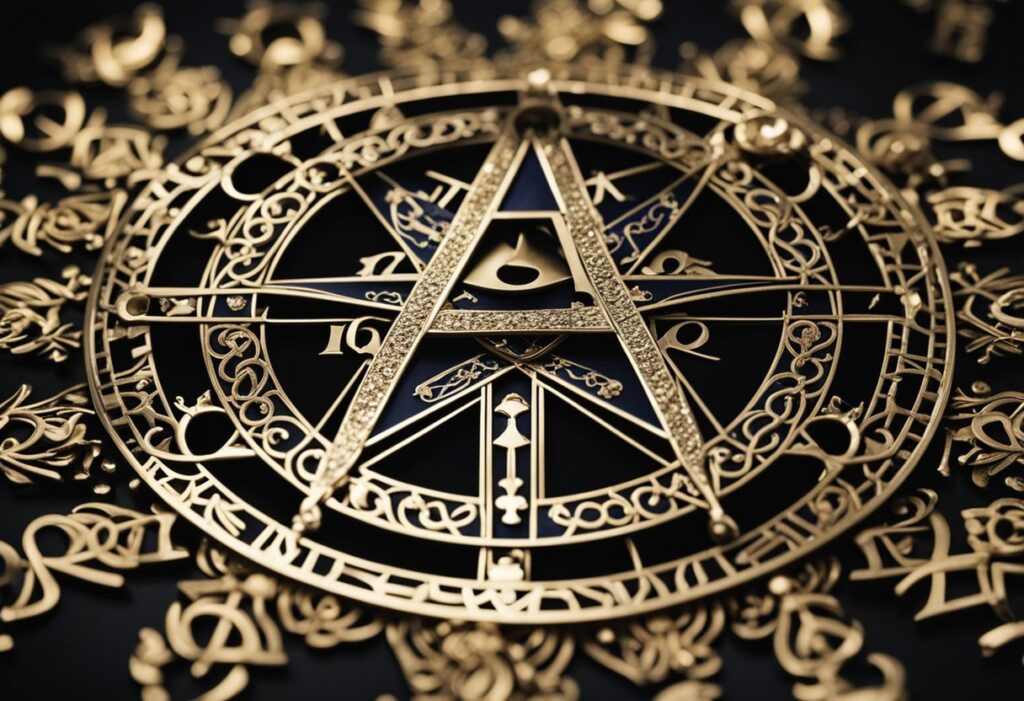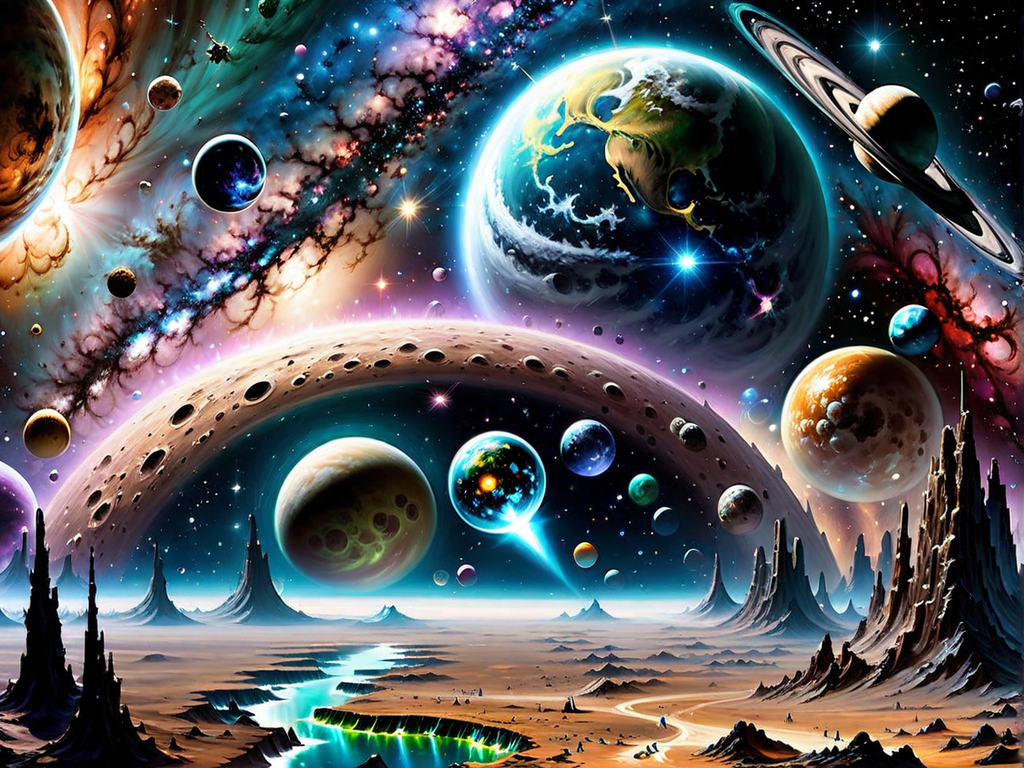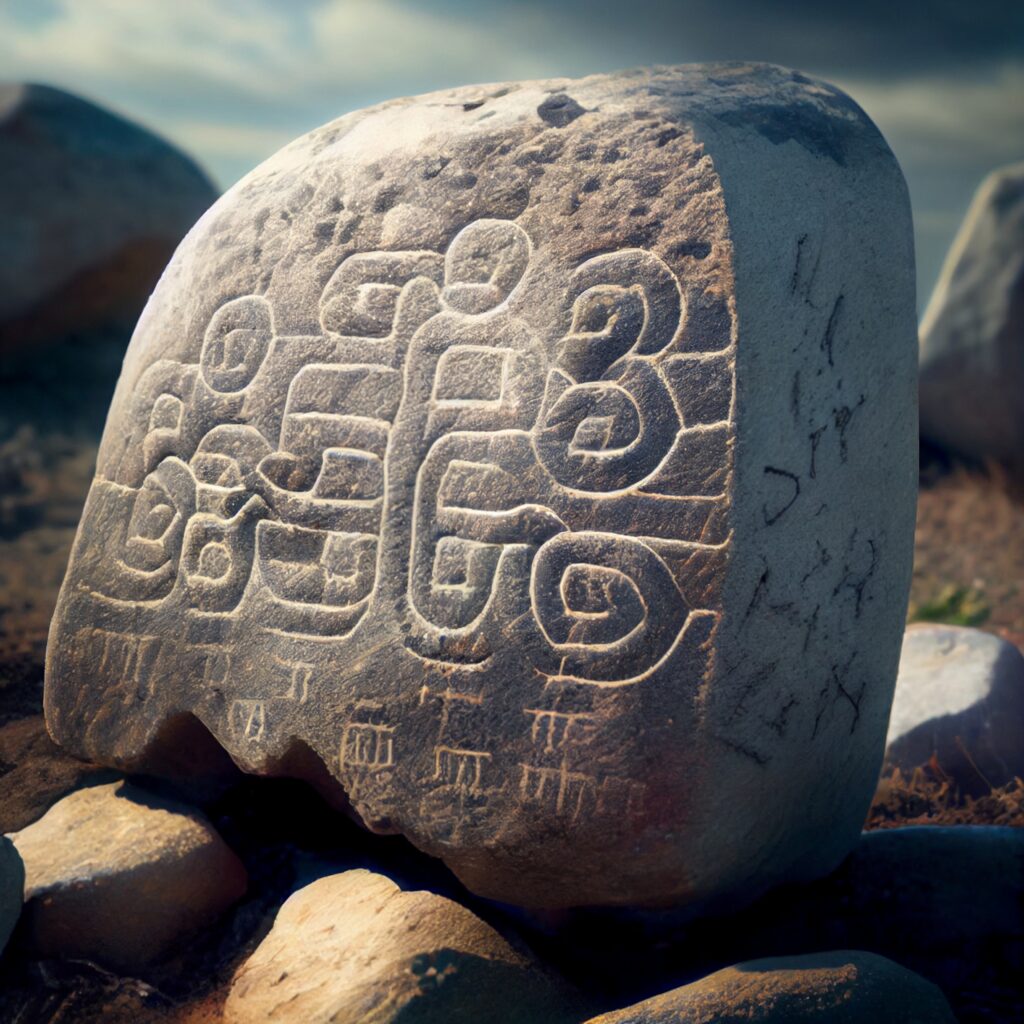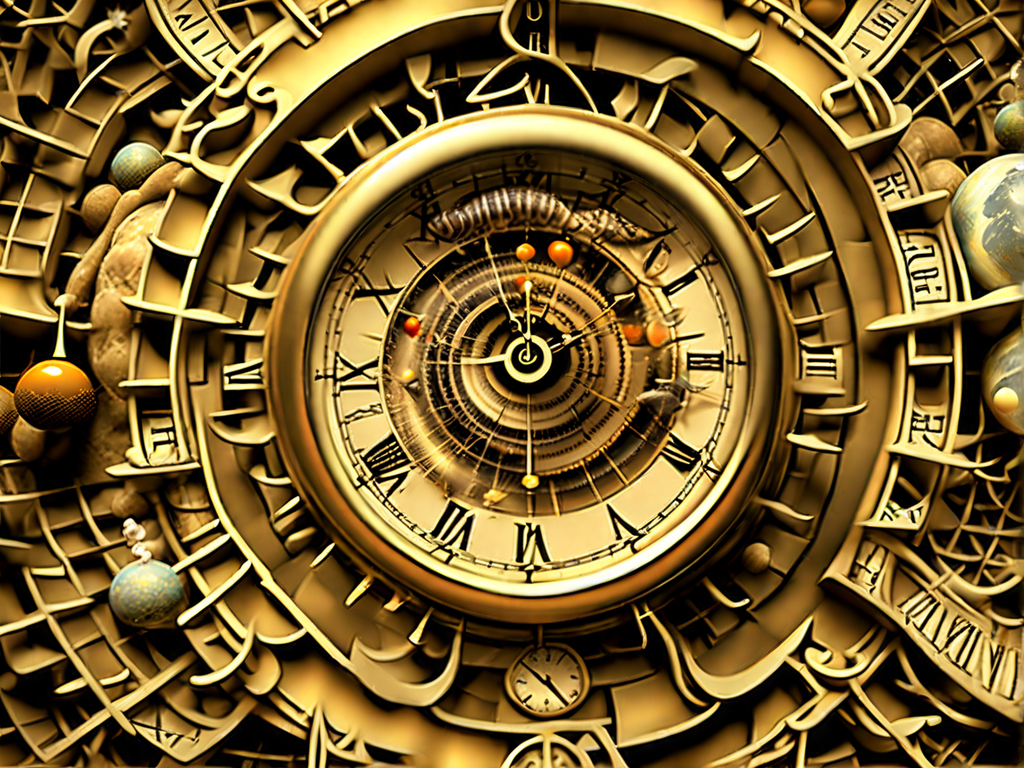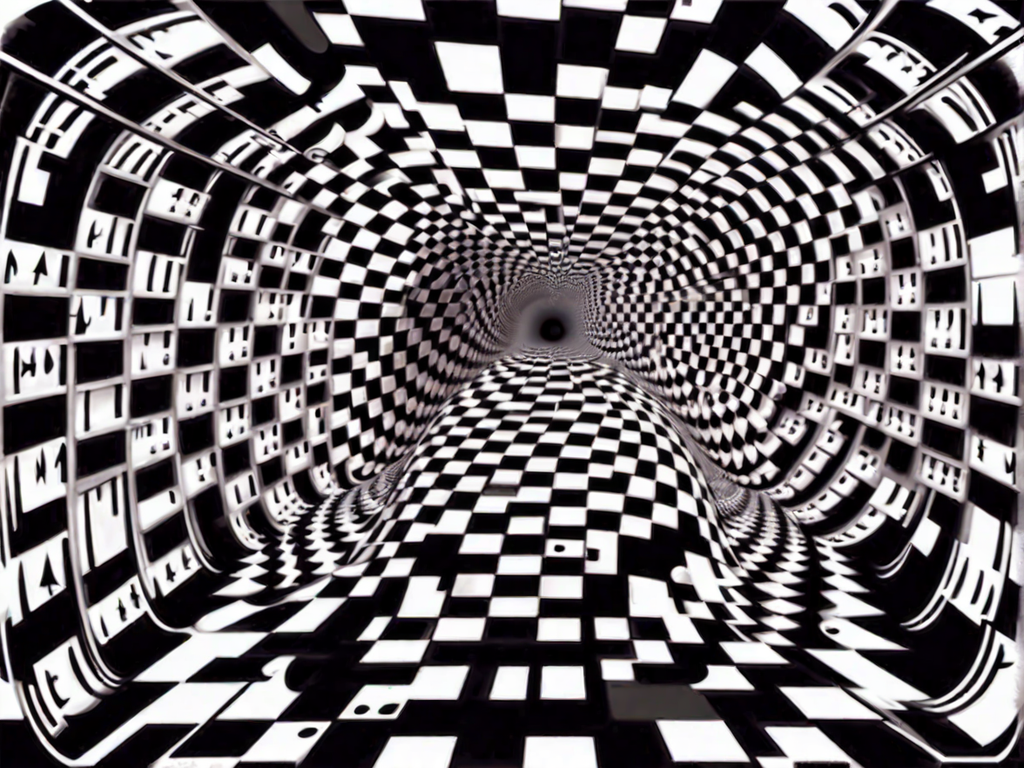Mathematical beauty is not confined to mere calculations. It extends beyond the realm of formulas and equations, revealing an enchanting world of aesthetics, patterns, and principles. In this article, we will embark on a journey to uncover the elegance hidden within the numerical landscape.
Numbers, often perceived as cold and rigid, possess a captivating allure that transcends their utilitarian purposes. From the graceful symmetry of geometric figures to the harmonious rhythms of musical compositions, mathematics holds the key to unlocking the aesthetic potential of the universe.
By delving into the world of mathematical structures, we will witness the captivating essence of symmetry and harmony. These fundamental principles create visually pleasing patterns and architectures that resonate with our innate sense of beauty. They reflect the underlying unity that permeates the mathematical fabric of our world.
One of the most mesmerizing manifestations of mathematical beauty is found in the Fibonacci sequence. Often referred to as nature’s artistic equation, this mathematical sequence can be observed in the precise arrangement of petals in a flower, the growth patterns of seashells, and even the spiral formations of galaxies. The Fibonacci sequence epitomizes the inherent aesthetic harmony embedded within nature’s design.
Fractals, infinitely complex mathematical patterns, offer yet another glimpse into the elegance of mathematics. These intricate structures, born from deceptively simple formulas, exhibit self-similarity at various scales. Their infinite complexity within simplicity serves as a testament to the enigmatic and beautiful nature of mathematical phenomena.
For centuries, artists, architects, and designers have drawn inspiration from the Golden Ratio, a divine proportion deeply rooted in mathematical relationships. This aesthetically pleasing ratio can be observed in nature, as well as in iconic works of art and architectural masterpieces. It symbolizes the balance and harmony that can be achieved through adherence to mathematical principles.
Finally, we will explore the beauty that lies within mathematical equations themselves. Certain equations and formulas have captured the hearts and minds of mathematicians and scientists throughout history. These equations embody the elegance and power behind mathematical expressions, uniting beauty and intellect in a truly extraordinary manner.
Join us on this captivating journey through the elegance of mathematics as we delve into the aesthetics of patterns and principles, uncovering the inherent beauty that lies within the world of numbers.
The Symmetry and Harmony of Mathematical Structures
In the world of mathematics, symmetry and harmony play a fundamental role in creating visually pleasing patterns and structures. These concepts are not just aesthetic in nature but also reveal the underlying unity within mathematical systems.
Symmetry, characterized by balanced proportions and mirrored images, is a captivating feature found in various mathematical structures. Whether it’s the perfect symmetry of a snowflake or the rotational symmetry of a kaleidoscope, this mathematical concept creates a sense of harmony and order.
Harmony, on the other hand, is the pleasing arrangement of mathematical elements that produces a sense of completeness and balance. It is through harmonious relationships between numbers, shapes, and equations that mathematical structures come to life.
One can witness the beauty of symmetry and harmony in the mesmerizing patterns of the Mandelbrot set, where intricate details repeat endlessly, creating a harmonious visual experience. Similarly, the symmetrical properties of fractals, such as the Sierpinski triangle, demonstrate the interplay between symmetry and complexity.
Mathematicians and scientists have long marveled at the elegant symmetries found in the natural world—the spiral patterns of sunflowers, the geometric arrangement of honeycombs, and the symmetrical shapes of snowflakes—all manifestations of mathematical beauty.
Achieving balance and elegance through symmetry
Symmetry is an essential element in artistic design as well. From the architecture of ancient civilizations to the works of famous artists like Leonardo da Vinci, symmetry has been used to create visually striking compositions that exude balance and elegance.
Harmony, on the other hand, is an integral part of music theory, where balance and consonance are achieved through the careful arrangement of notes and chords. The mathematical relationships between frequencies and intervals contribute to the harmonious sound that captivates our ears.
“Symmetry is what we see at a glance; based on the fact that there is no reason for any difference…”
– Blaise Pascal
The symmetries and harmonies present in mathematical structures go beyond their visual appeal. They serve as powerful tools for understanding and organizing complex systems, from the symmetries found in particle physics to the harmonies in musical composition.
- Symmetry and harmony bring a sense of beauty and order to the world of mathematics.
- Whether in nature, art, or music, these concepts create visually pleasing and aesthetically satisfying structures.
- Mathematical structures, driven by symmetry and harmony, reveal the underlying unity and elegance within mathematical systems.
By exploring the symmetries and harmonies inherent in mathematical structures, we gain a deeper appreciation for the beauty and elegance that mathematics has to offer.
Fibonacci Sequence: Nature’s Artistic Equation
The Fibonacci sequence, a mathematical phenomenon that recurs naturally throughout the world, unveils mesmerizing patterns and embodies the true essence of mathematical beauty in nature’s intricate design.
Derived from the sequence of numbers introduced by the Italian mathematician Leonardo of Pisa, also known as Fibonacci, the sequence begins with 0 and 1, and each subsequent number is the sum of the two preceding numbers. The sequence follows as: 0, 1, 1, 2, 3, 5, 8, 13, 21, and so on.
As we explore the wonders of nature, we encounter captivating examples of this sequence in action. From the arrangement of flower petals, the growth patterns of pinecones and pineapples, to the spiraling patterns of seashells and hurricanes, the Fibonacci sequence unveils a harmonious blend of mathematics and nature. The structure of these elements adheres to the sequence’s ratios, creating aesthetically pleasing designs that echo mathematical order.
“The Fibonacci sequence is like a guidebook of artistic proportions for nature, guiding the growth and aesthetics of countless forms found in the world around us.” – *insert relevant quote from renowned mathematician or scientist here*
By incorporating the Fibonacci sequence, nature achieves a remarkable balance, ensuring optimal growth and efficiency. The spiraling patterns in succulents, for instance, help maximize sun exposure and minimize shading. The precise arrangement of leaves on stems and the branching patterns of trees efficiently distribute resources, facilitating photosynthesis and supporting overall plant health.
The application of the Fibonacci sequence extends beyond the realm of flora. Consider the mesmerizing spiral patterns of nautilus shells or the intricate patterns found in certain species of spider webs. The precision and elegance of these natural designs reflect the inherent beauty of mathematical order.
Patterns in Art and Architecture
Not limited to the natural world, the Fibonacci sequence also finds its way into human creations, including art and architecture. Architects and artists have long embraced the aesthetics of the Fibonacci sequence, incorporating its ratios and principles into their designs to evoke balance, proportion, and harmony.
For instance, the Parthenon, an iconic temple in Athens, Greece, exhibits proportions that adhere to the Fibonacci sequence. The dimensions of the building’s columns and pediment align with the sequence’s ratios, resulting in an enchanting composition that has captivated observers for centuries.
“The Fibonacci sequence serves as a guiding principle in art and architecture, enabling the creation of visually pleasing designs that evoke a sense of harmony and balance.” – *insert relevant quote from an art historian or architect here*
- In art, the Fibonacci spiral is a technique employed by artists to create visually engaging compositions. This spiral design, often found in paintings and sculptures, draws the viewer’s gaze inward, evoking a sense of movement and intrigue.
- The use of the Fibonacci sequence extends to modern design and digital art as well. Graphic designers, web developers, and user interface experts incorporate these principles to create visually appealing websites, logos, and interfaces that are both functional and aesthetically pleasing.
Through the Fibonacci sequence, mathematics reveals its profound influence on the world around us. From the captivating patterns in nature to the harmonious designs in art and architecture, the Fibonacci sequence stands as a testament to the eternal bond between mathematics and beauty.
Fractals: Infinite Complexity within Simplicity
Fractals, the mesmerizing mathematical patterns, are a visual representation of the infinite complexity that arises from simple formulas. These intricate structures exhibit self-similarity at various scales, creating a profound sense of beauty and elegance.
At first glance, a fractal may appear like a complex web of shapes, spirals, and curves. However, beneath its intricate exterior lies a profound simplicity that is a testament to the inherent beauty of mathematics. Through the repetition of a basic formula, fractals unfold into mesmerizing patterns that continue to reveal new details as one zooms in or out.
The beauty of fractals lies in their ability to capture the essence of infinite complexity within a finite representation. Like a never-ending story, each fractal iteration reveals new intricacies, beckoning the viewer to explore their infinite depths. This infinite complexity is rooted in the simplicity of the underlying mathematical formula, showcasing the remarkable balance between complexity and simplicity in the natural world.
“Fractals offer a glimpse into the profound beauty within mathematics. Like a kaleidoscope of complexity, these patterns reveal the hidden harmony that permeates our universe.”
Fractals find their presence in diverse areas, from nature’s intricate designs to digital art and computer simulations. The branching patterns of trees, the intricate designs of snowflakes, and the delicate structures within our lungs all exhibit the self-similar characteristics of fractals. By examining these natural phenomena, we can gain a deeper appreciation for the infinite complexity that emerges from the simplest of mathematical principles.
Exploring the Mandelbrot Set: A Gateway to Fractal Wonder
One of the most famous fractals is the Mandelbrot Set, a complex mathematical construct named after the mathematician Benoit Mandelbrot. This captivating fractal is formed through the iteration of a simple equation, revealing an intricate and infinitely detailed structure.
- Start with a complex number c and set z0 to 0.
- Then, perform the following operation: zn+1 = zn2 + c.
- If the sequence of z values tends towards infinity, c is not part of the Mandelbrot Set. If the sequence remains bounded, c belongs to the set.
Through a process of iteration, the Mandelbrot Set reveals its infinitely intricate structure, with subtly connected spirals, bulbs, and filaments. Each magnification exposes new patterns, drawing us deeper into the complexity hidden within.
The enchanting allure of fractals lies in their ability to showcase infinite complexity within simplicity. They remind us of the inherent beauty and elegance that underlies the mathematical fabric of our world, inviting us to explore the profound wonders that numbers and equations hold.
The Golden Ratio: Divine Proportions in Art and Design
For centuries, the Golden Ratio has captivated artists, architects, and designers with its divine proportions and aesthetic appeal. This mathematical concept, often represented by the Greek letter phi (φ), is derived from the Fibonacci sequence and manifests as a ratio of approximately 1.618.
One of the remarkable characteristics of the Golden Ratio is its prevalence in nature and its ability to create a sense of harmony and balance. From the arrangement of sunflower seeds to the spiral pattern of seashells, this ratio appears in various organic structures, emphasizing the connection between mathematical beauty and the natural world.
In art and design, the Golden Ratio has been employed as a guiding principle to create visually pleasing compositions. It is often used to determine the placement of elements, such as the size and position of focal points, in order to achieve a sense of balance and proportion. Artists like Leonardo da Vinci and architects like Le Corbusier recognized the inherent beauty in this divine ratio and incorporated it into their masterpieces.
“The two rectangles with sides in the ratio of the golden ratio are considered to be the most aesthetically pleasing.” – Le Corbusier
Not only does the Golden Ratio enhance the aesthetic appeal of artworks and architectural designs, but it also has a psychological impact on viewers. Studies have shown that human perception is naturally drawn to objects that adhere to the Golden Ratio, suggesting an innate preference for balanced and harmonious compositions.
Applications in Modern Design
- Logo Design: Many logos of renowned brands, such as Apple and Twitter, have been created using the Golden Ratio. The ratio helps to achieve a visually appealing symmetry and balance, establishing a strong brand identity.
- Product Design: Industrial designers often employ the Golden Ratio to create products with pleasing proportions and ergonomic qualities.
- Photography: The rule of thirds, a composition technique based on the Golden Ratio, is widely used in photography to create visually engaging images.
The Golden Ratio continues to be a source of inspiration for artists, designers, and creators across various disciplines. Its inherent beauty and ability to evoke a sense of balance and harmony make it a timeless element in the world of art and design.
The Beauty of Mathematical Equations
Mathematical equations, the building blocks of the language of numbers and relationships, possess an inherent beauty that has fascinated great minds throughout history. These elegant expressions of mathematical concepts not only provide a means to solve complex problems but also embody the aesthetics and harmony found in the world of mathematics.
One of the remarkable aspects of mathematical equations is their ability to convey intricate relationships and patterns in a concise and precise manner. Equations allow us to describe and understand phenomena in the physical world, from the motion of celestial bodies to the behavior of subatomic particles. They provide a common language that enables scientists and mathematicians to communicate ideas and insights, unlocking new knowledge and advancements.
Furthermore, beyond their practical applications, mathematical equations hold a unique allure in their pure form. The elegance lies in their simplicity and symmetrical structure, showcasing the mathematical principles and patterns that underpin our universe. An equation can encapsulate the essence of an entire field of study, condensing complex concepts into a concise expression that reveals the underlying beauty and inherent logic of mathematics.
From the timeless elegance of Euler’s equation, which combines five of the most important mathematical constants, to the profound beauty of Maxwell’s equations, which describe the fundamental laws of electromagnetism, mathematical equations symbolize the intellectual achievements and creative brilliance of humans. They represent the fusion of logic, intuition, and aesthetics, uniting the realms of science and art. Mathematicians and scientists are continually inspired by the aesthetic appeal and harmonious elegance found in mathematical equations, a testament to the enduring beauty and power of the language of mathematics.






